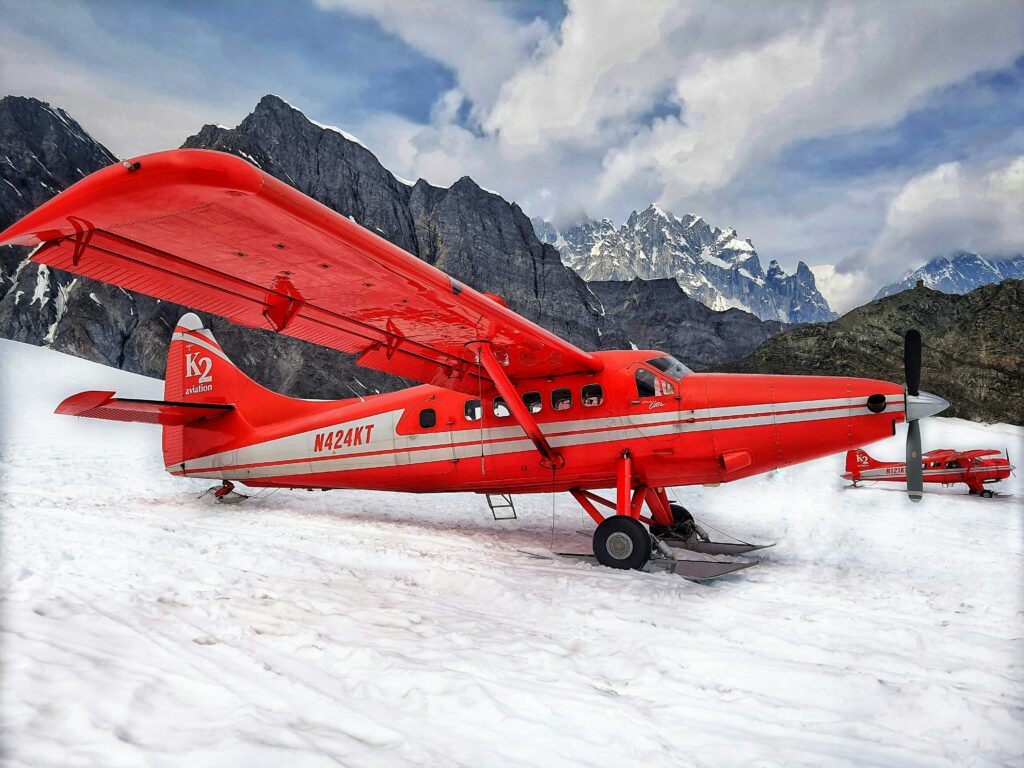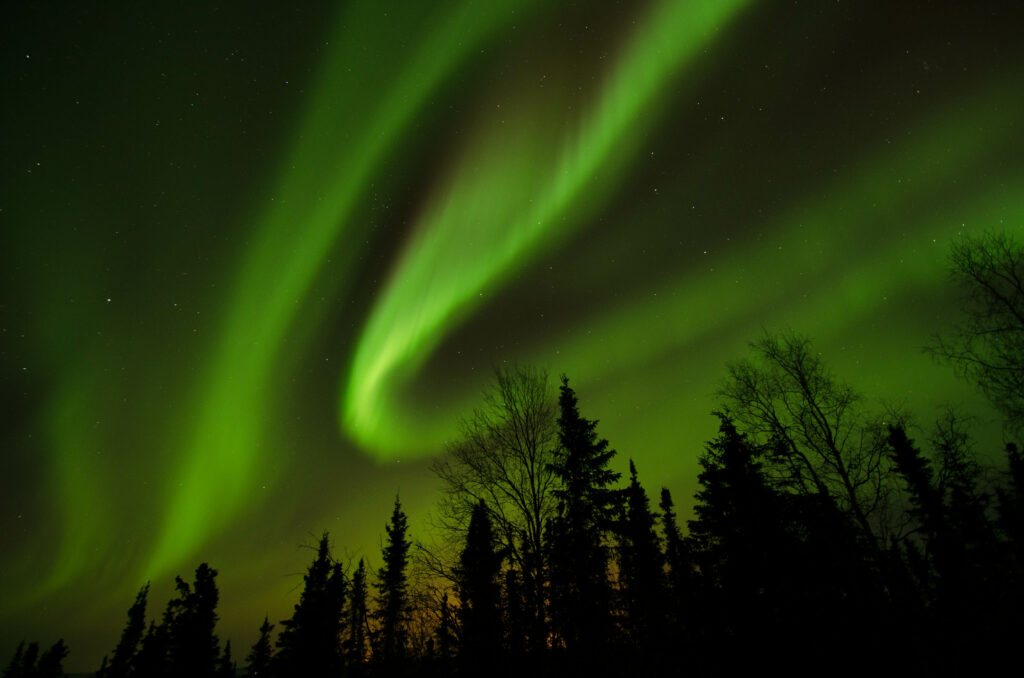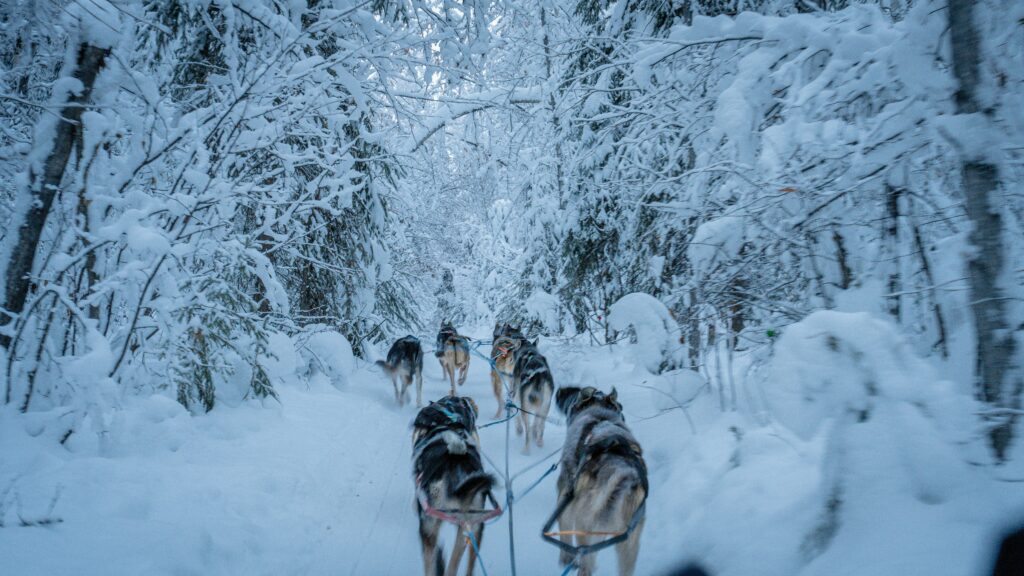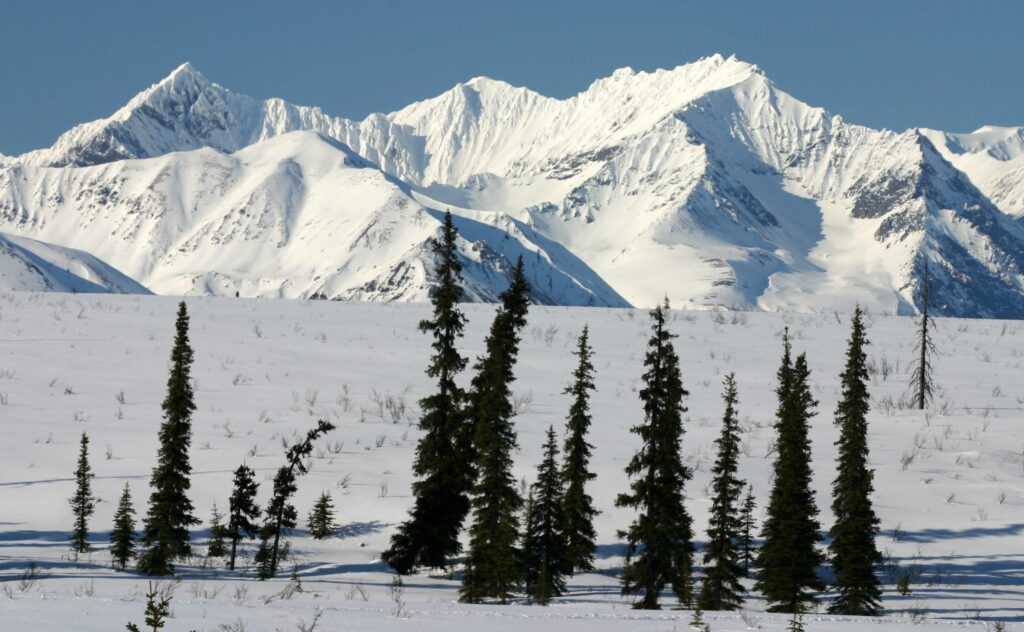Driving between Anchorage and Fairbanks Alaska in winter can be an unforgettable experience, offering stunning snowy landscapes, wildlife sightings, and the chance to view the Northern Lights. However, winter driving in Alaska comes with its own set of challenges, so it’s important to be ready. Here’s everything you need to know to make your journey safe and enjoyable.

Frequently Asked Questions About Driving in Alaska in Winter
It takes about 6-7 hours on average to drive the 360-mile stretch between Anchorage and Fairbanks via the Parks Highway (Alaska Route 3). This is the most direct and the best-maintained highway for winter travel between Anchorage and Fairbanks.
The Parks Highway (Alaska Route 3) is regularly plowed and surprisingly well-maintained. In fact, if you don’t have much winter driving experience, this is the only route you should take between Anchorage and Fairbanks. All other roads and highways between Anchorage and Fairbanks are much less maintained and therefore require a good vehicle that is equipped for icy/snowy roads. That being said, it’s still winter, and even Route 3 still requires attention to wintry conditions!
Driving at night definitely brings on extra challenges. For instance, it’s very likely to encounter both black ice and animals on the road. So you must must must stay alert! That being said, driving at night in Alaska in winter is doable, and the possibility of seeing the northern lights is that much more likely on the darkest stretches of the highways. Just take it slow and be extra alert at night.
For the most part, you can drive between Anchorage and Fairbanks without much winter driving experience. But you should absolutely familiarize yourself with safety tips for driving in snow and ice. The main takeaways are to never use cruise control, accelerate and decelerate slowly, and avoid slamming on the breaks. And of course, always watch for animals on the road!
Short of all-season tires, you don’t need to outfit your car with any other special winter gear to drive the Parks Highway (Alaska Route 3) in winter between Anchorage and Fairbanks. However, you should use a block heater and an ice scraper to prepare your car each morning before you start driving it. Good news! Rental cars usually come with winter tires, ice scraper, and block heater.
No. If you stick to the cities and main highways, you can drive a normal sedan, especially if you have a bunch of winter driving experience. Just make sure the sedan it has winter tires! However, you’ll feel better driving an SUV if you’re uncomfortable or worried about driving in snowy/icy conditions.
Renting a car and driving in winter in Alaska – Things You Should Know
Alaskan Winter Road Conditions
The primary route between Anchorage and Fairbanks is the Parks Highway (Alaska Route 3). It is the most direct and well-maintained highway for winter travel between Anchorage and Fairbanks, and the only route you should take if you don’t have much winter driving experience. This 360-mile stretch of road is regularly plowed and takes about 6-7 hours of driving without any stops.
While the Parks Highway is regularly plowed, you should always be ready for icy/slippery conditions. Even in small towns along the highway, your tires may spin out briefly in gas stations and grocery store parking lots. But don’t let this scare you! Short of all-terrain tires, you don’t need to outfit your car with any other special winter gear to drive this highway. Just take it slow.
All other roads and highways in the Anchorage-Fairbanks region, outside of the downtown areas, are much less maintained and therefore require a good vehicle that is equipped for icy/snowy roads.
That being said, even Route 3 still requires attention! Road conditions can vary significantly from one hour to the next, depending on the weather and the area. The Alaska 511 Travel Information service is an excellent resource for real-time road conditions. You can check road closures, weather warnings, live cams, and other important information before and during your trip. If the website doesn’t load, you can simply dial 511 from your phone while in Alaska to get road conditions updates.
General Winter Driving Safety Precautions
Winter driving in Alaska requires extra preparation, and it’s essential to be ready for potential emergencies. Before you start driving out of town, I recommend that you prepare a thermos of hot tea or hot chocolate for the road. Also take with you extra water and snacks and a fleece/wool blanket or sleeping bag, just in case. Other steps in preparation for driving out of an Alaskan town in winter include:
- Check the weather forecast and change your plans if it looks especially stormy.
- Charge your phone before leaving and remember to bring a phone charger with you. Your phone doubles as a flashlight and a GPS, among other things, so it is super important to keep it charged!
- Download maps for offline use. There are areas along the route that can have limited cell phone coverage, especially outside of towns.
- Fuel up. Gas stations can be sparse in remote areas, especially on the drive north of Denali. Make sure you have a full tank before starting your trip and top off whenever you can.
- Pack an emergency kit that includes warm clothing, an extra blanket, extra snacks and water, a car charger for your phone, and a small shovel and sand (for traction) if you plan to go off the beaten path.

More Tips for Driving in Snow and Ice
All roads in Alaska in winter will likely be icy, snow-packed, and slippery. You may encounter snowstorms or freezing rain mid-route, so it’s critical to drive cautiously and give yourself plenty of time for the entire journey. Always drive slower than usual in wintry conditions, especially on bridges and overpasses, turn on your headlights, and stay back 200 feet from snowplows.
If you’re new to driving in winter conditions, familiarize yourself with these safety tips for driving in snow and ice. The main takeaways:
- Warm up your vehicle before starting it and let it run for a few minutes before taking off.
- Never use cruise control.
- Keep an extra distance from other vehicles.
- Accelerate and decelerate slowly. When you need to stop, pump the breaks instead of slamming on them.
- When approaching a curve, gently apply the brakes before you start turning the wheel.
- When going uphill, avoid stopping but also avoid accelerating. Try to get a little inertia going before you reach the hill and let that inertia carry you to the top.
- You won’t see black ice coming. So the best you can do is always be ready for it. When it comes, look for open space and plan to travel in that direction. Accelerate just a little and steer gently – without sudden movements – in the direction of the open space.
- Watch for animals on the road!
Renting a Car in Winter in Alaska
In Alaska during the winter months, rental car companies typically offer vehicles equipped with winter-ready features, but the specifics may vary depending on the company and the type of vehicle. It’s always a good idea to check for winter-ready features with the rental agency when booking, particularly if you’re renting a smaller or economy car. Here’s what you can generally expect:
- Winter Tires: Most rental car companies in Alaska will equip their vehicles with winter tires (also known as snow tires or studded tires) during the winter season. Winter tires – or at least all-season tires with good tread – offer better traction on snow and ice, making them essential for safe driving.
- Ice Scraper: An ice scraper is commonly included in rental cars in Alaska in winter, as it’s a basic tool for dealing with frost and ice buildup. However, if it’s not provided, it’s a good idea to ask for it or bring your own.
- Block Heater: To warm up your engine and fluids before starting the car. Less common in Anchorage, but a very nice feature in Fairbanks, you’ll see parking spots that have electric outlets to plug in your block heater overnight. When temps are consistently below zero day and night in Fairbanks, check that your rental comes with a block heater and extension cord and ask the rental attendant to show you how to use it.
- Shovel and tire chains: Only needed if you plan to drive smaller remote roads. Not always standard, but many rental agencies will provide shovel and tire chains upon request, especially if you’re renting a larger vehicle like an SUV or a 4×4. Some companies might include a small snow shovel as part of the winter package.
- Insurance: Make sure you have adequate insurance in case of an accident. Don’t rely on roadside assistance or state troopers as response time may be slow.

How to Pack for a Winter Road Trip in Alaska
In addition to the emergency supplies mentioned above, it’s important to pack appropriately for the cold:
- Thermos for hot chocolate, tea, coffee. This GSI Insulated Bottle, for instance.
- Fleece/wool/down blanket or sleeping bag for emergencies. Check out this Rumpl Blanket.
- Hand/toe warmers. Stock up from Ignik!
- Clothing: Dress in layers – start with Smartwool for thermal base layers (long underwear top and bottom) and for over-the-calf ski socks. Next layer is a warm fleece or sweater, followed by an insulated waterproof yet breathable jacket. Complete your outfit with insulated mittens, lined with fingerless gloves. Of course, winter hat with balaclava and a scarf are all important for staying warm in the frigid temperatures.
- Footwear: Insulated, waterproof boots like SOREL are essential for walking on snow and ice. It’s also a good idea to bring extra socks and hand warmers. Pack ice grippers for walking around on icy surfaces, like yaktrax or microspikes.
- Sunglasses: The winter sun can be harsh, especially on snow, so be sure to pack a good pair of polarized sunglasses to protect your eyes.
FYI you can rent outerwear and winter accessories in Anchorage and Fairbanks! Check out Alaska Outdoor Gear.
The Parks Highway – Suggested 3-Day Itinerary
Though you could drive the entire 360-mile stretch of the Parks Highway all in one day, we recommend you break up the drive in 2 hour increments and make it a 3-day road trip:
- Day 1 – Drive from Anchorage to Talkeetna. Book a winter excursion for the afternoon such as flightseeing, ice fishing, or cross-country skiing
- Day 2 – Drive from Talkeetna to Healy. Stop at Denali State Park and Denali National Park for a little snowshoeing.
- Day 3 – Complete the drive to Fairbanks.

Conclusion
Winter in Alaska is truly something special, and driving between Anchorage and Fairbanks in winter is a beautiful but challenging adventure. But whether you’re exploring the great outdoors, soaking in hot springs, or simply marveling at the quiet of the winter landscape, Alaska in winter is a place where nature puts on its most stunning show. Prepare for winter conditions, carry emergency supplies, and plan for limited daylight hours. Take your time and enjoy the stunning landscapes and the unique charm of Alaska’s winter. With proper preparation, your journey can be both safe and unforgettable.

